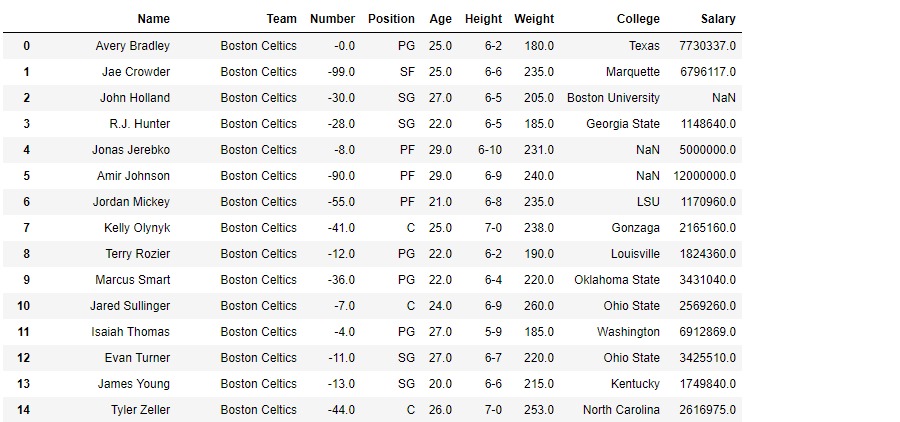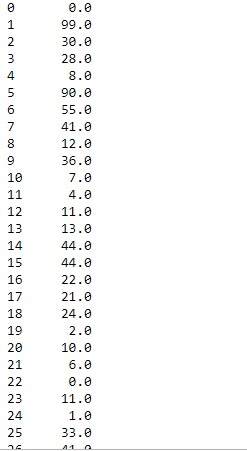Python是進行數據分析的一種出色語言,主要是因為以數據為中心的python軟件包具有奇妙的生態係統。 Pandas是其中的一種,使導入和分析數據更加容易。
dataframe.abs()是最簡單的pandas DataFrame 函數之一。它返回帶有絕對值的對象,並且僅適用於所有數字對象。它也不具有任何Nan值。abs()函數也可以與複數一起使用以找到其絕對值。
對於複數,絕對值定義為:

用法: DataFrame.abs() 返回:type of caller
有關在代碼中使用的CSV文件的鏈接,請單擊此處
範例1:用nba.csv文件中的“Omega Warrior”替換團隊“Boston Celtics”
# importing pandas as pd
import pandas as pd
# Making data frame from the csv file
df = pd.read_csv("nba.csv")
# Printing the first 10 rows of the
# data frame for visualization
df[:10]
為了找到絕對值,我們還需要在 DataFrame 中使用負值。因此,出於演示目的,我們將某些值更改為負數。
# This will set the Number column
# to be all negative.
df.Number = df.Number*(-1)輸出:

現在使用 abs() 函數僅查找Number列的絕對值。
# Applying abs() value on one column only
df.Number.abs()輸出:

範例2:正在申請abs()在具有複數的序列上
# Importing pandas as pd
import pandas as pd
# Creating a series
ser = pd.Series([1.2 + 1j, 2 + 5j, 1 + 8j, 3.2 + 2j])
# let's print the values in ser
ser
# Using abs() function to find the
# absolute value of the complex numbers
absolute_values = s.abs()
# Print the absolute values of all complex numbers
absolute_values
相關用法
- Python pandas.map()用法及代碼示例
- Python Pandas Series.pow()用法及代碼示例
- Python Pandas Series.div()用法及代碼示例
- Python Pandas Timestamp.tz用法及代碼示例
- Python Pandas Timestamp.dst用法及代碼示例
- Python Pandas dataframe.sub()用法及代碼示例
- Python Pandas Series.abs()用法及代碼示例
- Python Pandas Series.sum()用法及代碼示例
- Python Pandas Series.all()用法及代碼示例
- Python Pandas Index.all()用法及代碼示例
- Python Pandas TimedeltaIndex.name用法及代碼示例
- Python Pandas Series.str.pad()用法及代碼示例
- Python Pandas Timestamp.now用法及代碼示例
- Python Pandas Dataframe.pop()用法及代碼示例
- Python Pandas Series.mul()用法及代碼示例
注:本文由純淨天空篩選整理自Shubham__Ranjan大神的英文原創作品 Python | Pandas DataFrame.abs()。非經特殊聲明,原始代碼版權歸原作者所有,本譯文未經允許或授權,請勿轉載或複製。
